Milestone
More than 3 months have passed. An ignominious milestone.
Last weekend marked 100 days since ‘Black Saturday’, the day of the massacre perpetrated by Hamas. Many Israelis were kidnapped to Gaza.
Approximately 136 Israelis remain in captivity.
We know, from the accounts of those released, that they are underfed and abused. Some have been beaten, and some sexually violated.
https://www.nbcnews.com/news/world/hostages-held-hamas-describe-life-was-captivity-rcna126781
Are they all still alive?
Public pressure has been increasing for the Israeli government to be more proactive in arranging their release.
Vigils have been regularly held.
Hostage Release - A Hot Topic
Freeing the hostages is a stated priority of Israel’s military aims in Gaza.
Cracks are growing in the government, which only raises the public’s distrust of the motives driving government decisions and actions. Some say Hamas will only release hostages under military pressure.
Others believe this this will take too long; the hostages' prospects of survival in current their conditions worsen with time, and they are exposed to harm by Israeli operations.
As I understand it, this boils down to two difficult options:
- Continue the military campaign.
This will increase pressure on Hamas and may incentivize them, when up against a wall, to release the hostages.
This allows us not lose momentum in the fighting. However, it may take some time, which is of the essence for those holding on to life in a tunnel somewhere.
Remember, too, that Hamas still holds hostages they took more than 5 years ago, holding them as a negotiation card. They don't appear to be in a rush to give them up. - Try to arrange for the hostages' release.
Hamas has offered to come to an agreement in exchange for a permanent ceasefire - that they in any case are unlikely to respect. Even a temporary ceasefire for such purpose, however, will allow Hamas to regroup, risking the lives of our soldiers in future battles.
This also assumes that such an agreement can even be brokered.
Leveraging this soft spot in public sensibilities, and hoping to pressure Israel into a ceasefire, Hamas released a video of live hostages, and a day later sent photos of their bodies, claiming they had been killed in Israeli strikes
Protests
The welfare of the hostages has become supreme in the Israeli public conscience.
Signs of “Bring Them Home” are everywhere.
As I write these lines, sitting in Israel’s new National Library building, a protest is taking place across the road at the Knesset, with trumpets blaring and shouts of ‘Bring Them Home’.
At the library’s entrance, seats have been placed for each of the hostages, with a book suitable for that individual.
Similar efforts have been popping up all over the country.
Kidnapped Square
Last weekend’s milestone - 100 days since the hostages were abducted - has been well-publicized.
A 24 hour protest and vigil was held at Kidnapped Square in Tel Aviv.
This is a focal point for protest activities, near the Tel Aviv Museum entrance. Last week I went to see it for myself.
At the entrance one is greeted by a large screen, counting the days during which the abductees have been held. Watching the seconds tick by is itself a powerful reminder of the urgency in arranging their release.
Numerous artistic installations express the difficult absence of the hostages. A sculpted sign in stark yellow states ‘YOU ARE NOT ALONE’. This could be a symbolic message to the hostages not to give up hope, or it could equally be a message of solidarity for family members at home who feel that the full weight of their pain is solely on their shoulders.
A large dining table has been set with a place for each of the hostages. This helps one to visualise the number of captives that are missing. Tellingly, it includes teddy bears and children’s drinking bottles.
A chess board with pieces representing the hostages, as well as other displays, including giant dog-tags,
all highlight a feeling of absence and longing.
Visitors are invited to record their feelings and messages of hope on notes that are displayed together.
There is a ‘yellow brick road’ paved with notes of angst.
A tent has been set up by members of the Nachal Oz Kibbutz, which suffered heavy losses, of both people and property, during the massacre. Here, past and present members of the Kibbutz discuss with passers-by life in their kibbutz and the current situation.
Protestors decry the Red Cross. Charged with ensuring the safety and welfare of hostages and prisoners of war around the world, they have been woefully - many would say wilfully - absent from our story. They dance to the tune of Hamas, making no visible effort to overcome Hamas refusals to grant them access to the hostages they hold.
Seeing my camera, a woman named Ilania Arbet grabbed my arm. Her contribution to the war effort, she explained, is through a poem she had written to the leadership of Hamas. She asked that I film her and publicise the poem.
I came across bloodied legs protruding from a tent marked NOVA.
NOVA was a 24-hour music festival held in the desert celebrating peace and love. Around 3500 people attended, of which 364 were massacred, including while being raped or hiding. Many more were injured.
https://en.wikipedia.org/wiki/Re%27im_music_festival_massacre
The NOVA Exhibit
What occurred at the festival is the subject of a phenomenal temporary display that was held at the Tel Aviv Expo.
I managed to see the display before it was closed and prepared for exhibit abroad.
The festival site was recreated using installations and debris from the original site. It was just as it would have been found after the attack, but without the bodies of the victims. The terror in such a beautiful setting was palpable to everyone.
Our guide was a survivor of the massacre. He explained that he was still in therapy and suffering trauma, so we should bear with him and understand if he is unable to answer some of our questions.
We started at the recreated camping area, where broken tents and personal belongings were strewn among the trees.
Portable toilets - the originals from the festival - were on display. Bullet holes clearly show where the attackers sprayed their bullets hoping to end the life of anyone inside.
The drinks bar, with the debris of bottles and refrigerators, had been brought and reinstalled at the exhibit. I looked at the fridges, small boxes, into which a small person could fit, and indeed where some hid, before being later shot in their hiding spot at point blank range.
And skeletons of cars. These were some of the numerous cars that were scattered on the road leading from the festival site. With the road blocked by terrorists spraying bullets, fleeing festivalgoers were stuck in a traffic jam. Those who were not shot dead were burnt in their vehicles as Hamas ‘fighters’ lit flames and pushed them into the vehicles’ gas tanks.
An enormous scrolling video screen presents the faces of those taken hostage
One watches, appalled, as a seemingly unending display of faces moves past your eyes
Another display commemorates the brave policemen and policewomen killed while coming to the rescue of the revelers.
Artworks dedicated to the victims and serving as expressions for survivors bring a whole extra dimension to the exhibit.
They say what tangible items cannot.
And then, there is what our guide described as the ‘Holocaust tables’ due to the piles of shoes placed on them.
Personal items collected from the site were carefully put on display in the hope that they might be claimed by their original owners who fled for their lives.
Those who survived, that is.
Clothing, footwear, sleeping gear. electronics, toiletries: this list goes on and on.
Some survivors don’t want their gear back because it is too traumatic for them. Some victims' families also don’t want any connection with the event, while others are desperate to have these items in their possession.
A pair of Blundstone Boots was on display. Our guide explained that they were different sizes and not actually a pair. One visitor informed them that they were a left and a right shoe belonging to two best friends, neither of whom survived. The exhibitors decided to pay homage to the friends by keeping their shoes together as a pair
A short ringtone sounded and our guide looked at his phone.
"I'll just mention that a missile alert has been sounded for the Rehovot area. We are fine, but for the sake of anyone who wishes, we will continue in the shelter room. This way, please."
While some walked in the indicated direction, a series of loud explosions could be heard, and the hall shook ever so slightly.
The guide looked back at his phone. "Those booms were from the Iron Dome system. We're fine. Please take a few minutes to wander among the exhibits."
Everyone left the hall in a somber mood.
I didn't listen to the news on the drive home to Jerusalem. I was drained and didn't have the emotional capacity to listen to the BBC, with its gross blindness to the suffering of Israelis, or to Israel radio, which releases announcements of the young men killed battling Hamas, leaving more orphans and widows and grieving families.
If the exhibit comes to your area, I highly recommend you visit.






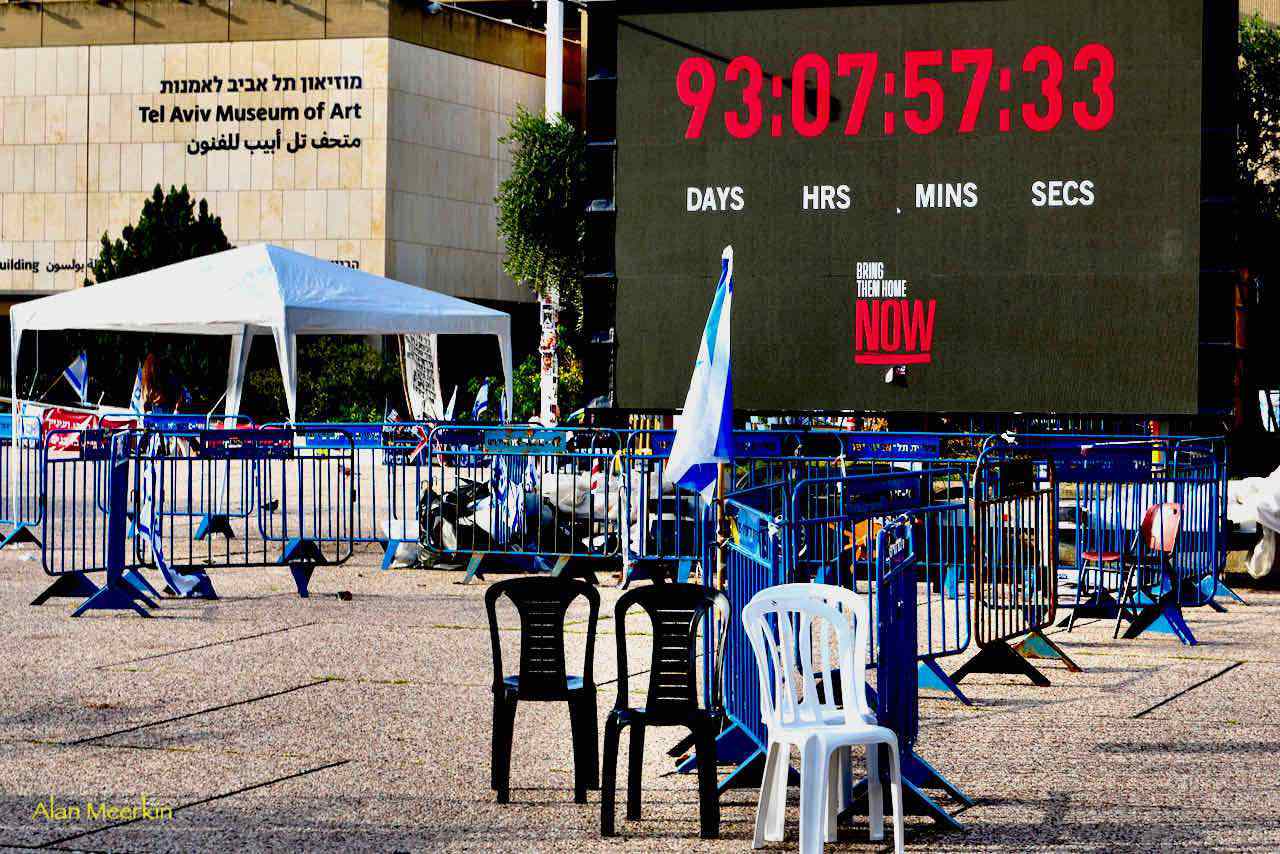



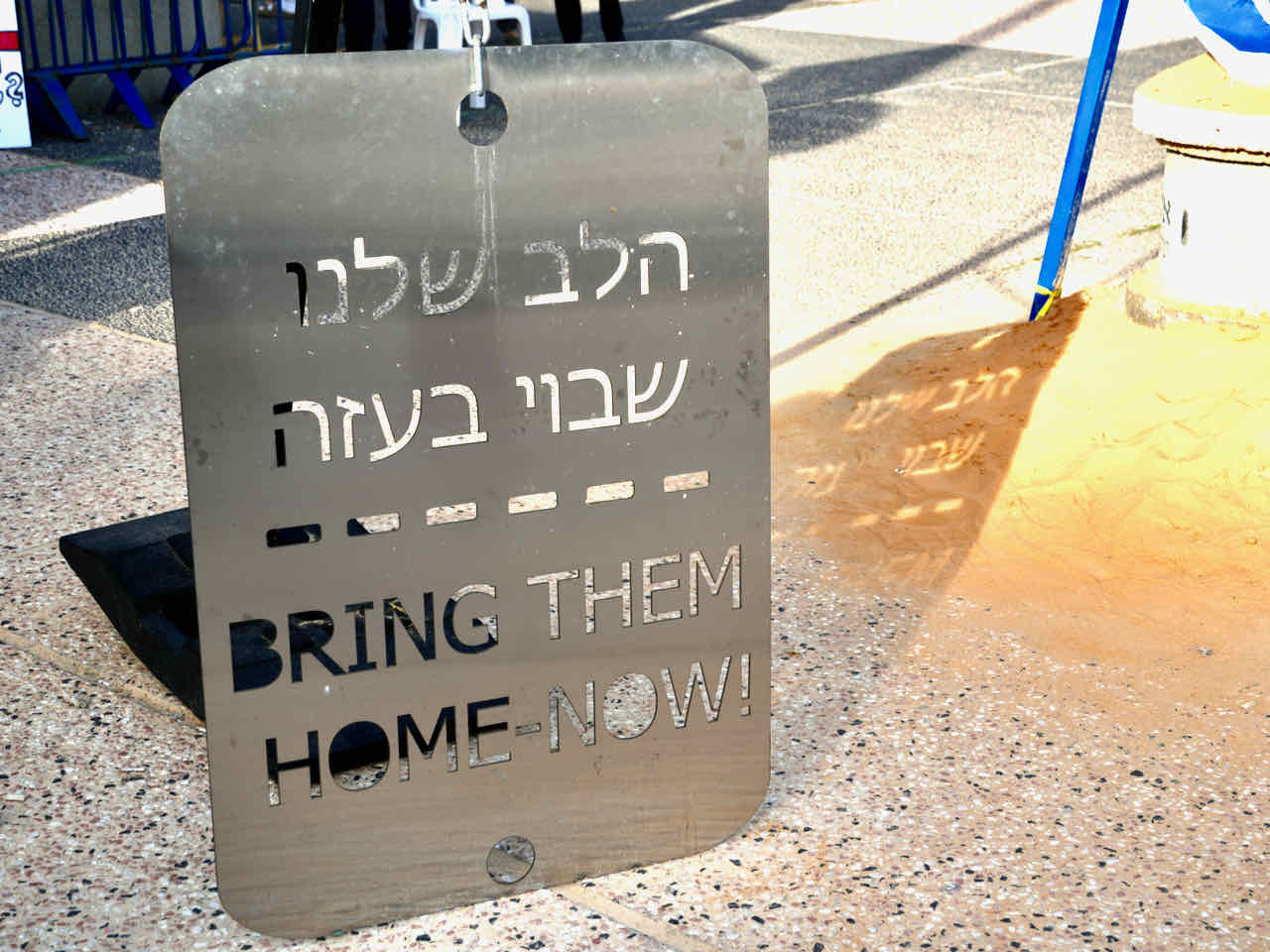

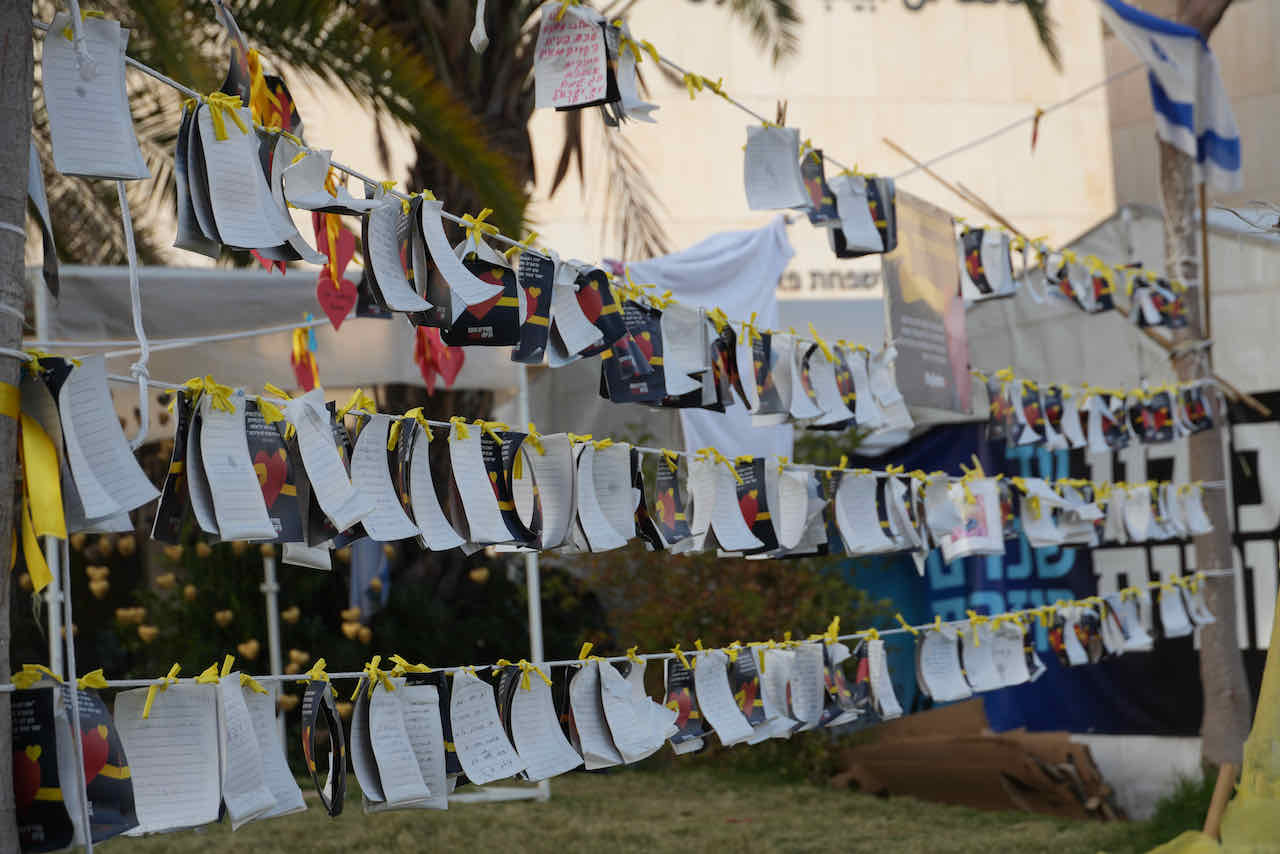

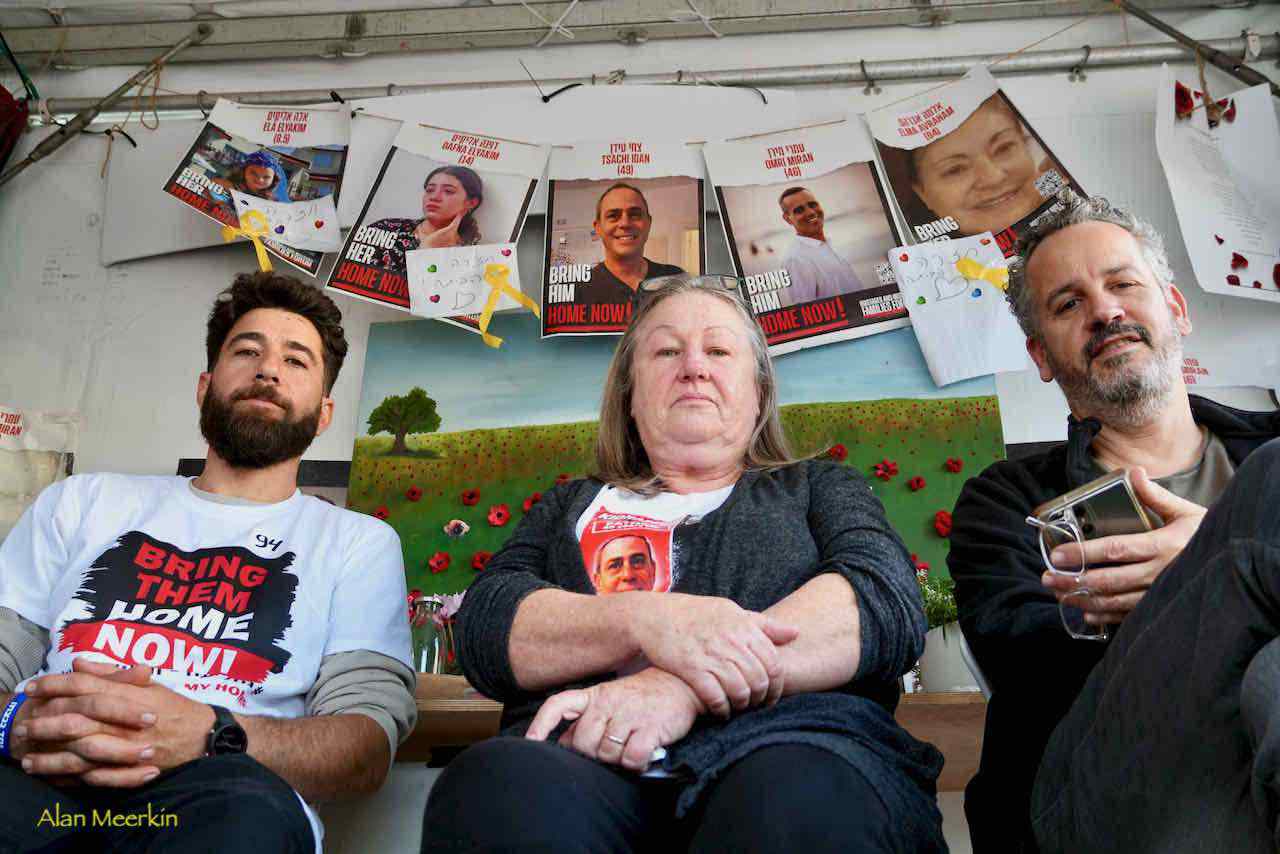







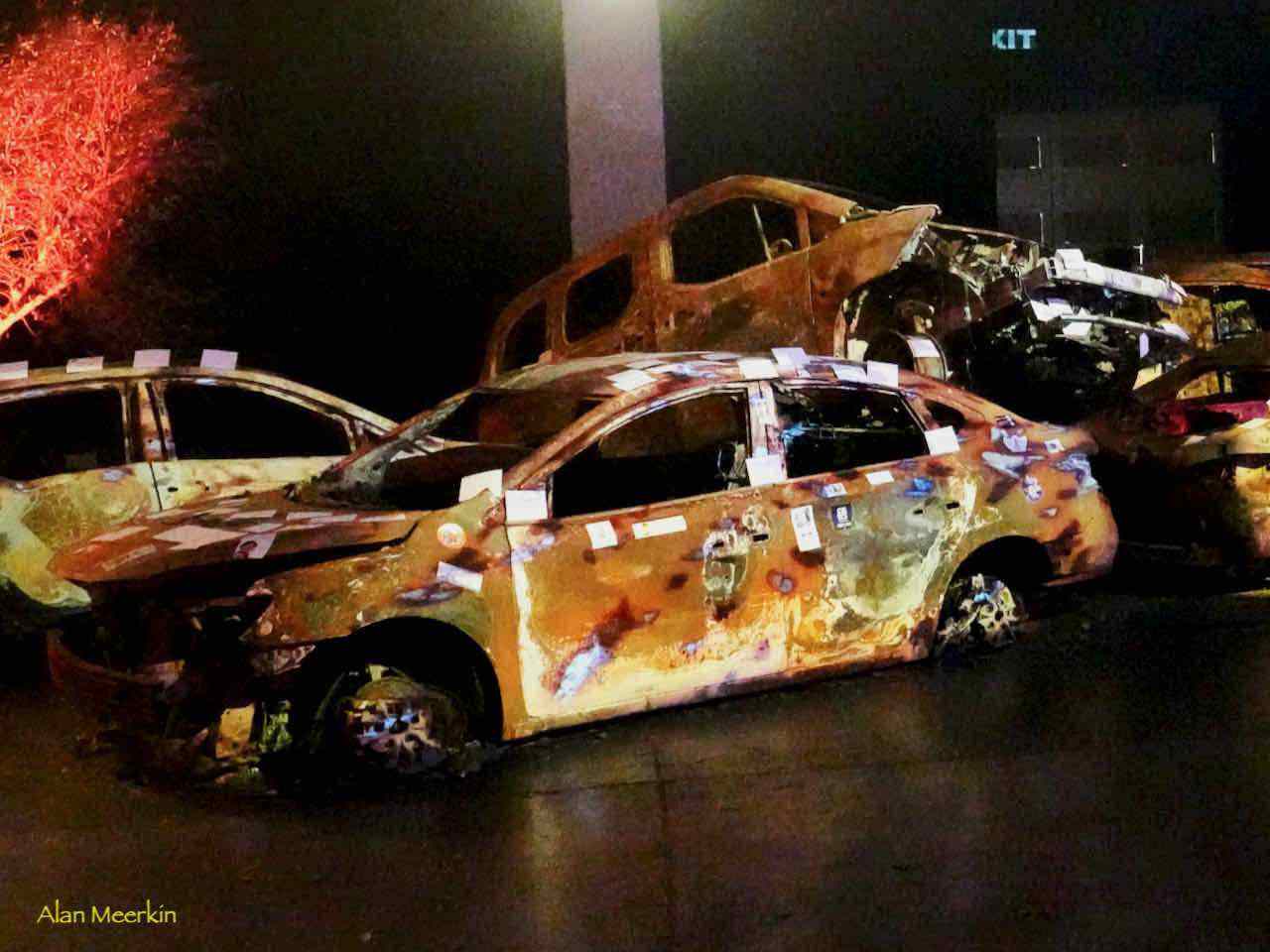






3 comments:
Thank you so much for sharing this Alan. Your words and pics describing the temporary display
Enabled me to have some idea
Of what you saw and experienced. Here in Melbourne 1000’s of miles away, the community, like so many others in the world, is grieving, angry, frustrated. My heart breaks every morning when I wake and remember … it’s another day and they are still not home.
Bring Them Home NOW!
🙏
This is so painful Alan. Thanks for sharing. Our hearts are aching.
Post a Comment